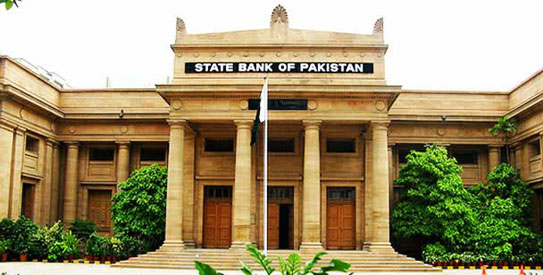According to the State Bank of Pakistan’s (SBP) Half Year Report on the State of Pakistan’s Economy, released on Monday, Pakistan’s macroeconomic conditions showed notable improvement during the first half of fiscal year 2025 (H1-FY25).
The report highlighted major achievements, including a sharp fall in headline inflation, a turnaround in the current account to surplus, and containment of the fiscal deficit to its lowest level since FY2005. As per the report, these favourable outcomes were driven by a calibrated monetary policy, fiscal consolidation, subdued global commodity prices, and the continuity of the International Monetary Fund’s (IMF) Extended Fund Facility (EFF) program.
International credit rating upgrades for Pakistan were cited as a reflection of growing confidence in the country’s improving macroeconomic environment.
Inflationary pressures receded significantly, with headline inflation dropping to a multi-decade low of just 0.7 percent by March 2025. The SBP attributed this steep disinflation to tight monetary and fiscal policies, improved domestic supply conditions, moderation in energy prices, and low international commodity prices.
In response to the cooling inflation, the SBP reduced the policy rate by a cumulative 1,000 basis points between June 2024 and February 2025. The report noted that this easing in financial conditions, alongside a slight uptick in economic activity and lending linked to advances-to-deposit ratio (ADR) regulations, fueled substantial growth in private sector credit during the period.
However, the report pointed out that overall real GDP growth remained moderate. This was largely due to a decline in kharif crop production—caused by reduced cultivated area, lower yields, policy uncertainty, last year’s weak crop prices, and unfavourable weather conditions—and a contraction in industrial activity.
While large-scale manufacturing, mining and quarrying, and construction sectors registered declines, small-scale manufacturing, utilities, and the slaughtering sub-sectors helped limit the contraction. The services sector showed relatively better performance compared to the previous year.
On the external front, a steady increase in exports and remittances during H1-FY25 helped offset a rise in imports, resulting in a current account surplus. This surplus, alongside IMF inflows and a pickup in private sector foreign investments, bolstered SBP’s foreign exchange reserves.
The SBP expects this positive momentum in exports and remittances to continue outpacing imports, thereby helping to maintain external sector stability even if financial inflows moderate.
The report also featured a special chapter titled “Pakistan’s Low Competitiveness: A Case for Investing in Productivity”, warning that persistent weak growth in labor and total factor productivity has hampered Pakistan’s long-term competitiveness and economic resilience. The SBP urged focused reforms to address structural bottlenecks, citing international examples for actionable insights.
Based on recent trends, the SBP revised its inflation forecast for FY25 to 5.5–7.5 percent, reflecting steeper-than-expected disinflation. The current account balance is projected between -0.5 to +0.5 percent of GDP. Real GDP growth projection remains unchanged at 2.5–3.5 percent, though the central bank flagged downside risks such as potential fiscal tightening and an uncertain wheat harvest.
The SBP also warned of medium-term risks stemming from global trade tensions, volatile commodity prices, currency fluctuations, and domestic policy adjustments.




